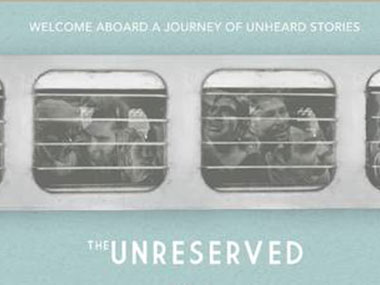One thing the Indian Railways isn’t known for is the ready availability of confirmed tickets; long-distance trains are almost always overbooked. However, there is an unreserved coach — the ‘general bogey’ — on every train. Anyone can get an unreserved ticket, also the cheapest, to travel in this compartment. Sounds good, except for the tiny matter that forget getting a seat during the journey — you’d be lucky to get a place even to stand. In his National Award winning film (for Best Non-Feature Film Audiography) The Unreserved, director Samarth Mahajan documents the lives of the different people he met in the unreserved coaches of trains, while on a 17-day journey across India. Excerpts: What inspired you to make this film? And how long did it take to make? A major inspiration for The Unreserved were my experiences during the Jagriti Yatra, an 8,000-km journey across India, during which I grew really fond of trains. When I tried to find some accounts of travels or conversations in trains, I only found some vlogs by foreigners who’d travelled by sleeper class. I decided to focus on unreserved compartments — the class that carries almost 65 percent of the passengers of Indian Railways. Nobody travels in it by choice, they only do so if there are economic compulsions or unplanned events. So I knew there were a lot of unheard stories there. It took us almost 10 months to complete the film — from ideation to execution. For four months, we were just figuring out the ways in which we can shoot in a rain, the permissions involved, and fundraising options. This was followed by two months of research and pre-production. Our shoot lasted 17 days, and the rest was post-production. Could you tell us something about the filming process? How did you manage to get passengers to open up to you? We kept things very simple. Once we had the basic idea, we knew it was going to be a conversation-driven film. We studied literature on the art of conversation. A conscious decision was to share a lot about myself, as I felt that would help people open up. We also compiled a database of each and every station on our entire route, along with important news, facts and recent developments on it, that helped us trigger some conversations. We didn’t want to intimidate passengers, so we didn’t use heavy equipment, just hand-held cameras. In post-production, we knew that the editing had to be thoughtfully minimal. So we fixed a basic structure which you see repeating throughout the film, and then chose stories based on themes and depth. You must have interviewed a lot of people through your entire journey. How did you pick the interviews you used in the film? We ended up talking to more than a 100 people, and had to sift through 40 hours of footage. We wanted each conversation to bring out a different theme, and also to have a particular story arc, where you start from one point and end up at a completely different one, giving a small, yet important, insight into a person’s life. When we applied these two criteria, we were left with what became the film. How challenging was this project? It must’ve been exhausting to travel continuously for 17 days? Space was an issue throughout. On some routes, there would be around 300 people cramped in a compartment meant for 90, at times, we were forced to stand on one leg, lie down on the luggage racks or sit on the toilet seat. We travelled for 17 days in 10 different unreserved compartments, some of these journeys were more than two days long. So, obviously it was strenuous, and not just physically; there was a lot of emotional investment, so mentally also it was quite exhausting. When it comes to conversations, it was quite a task to talk to women, without their husbands answering for them. Language was also a big issue, especially while traveling through South India. What about audiography? How did you manage to get clear sound on location? This was the first time I did sound recording. I carried a handheld Zoom H6 Handy Recorder while shooting the conversations. I had done a half day recce in a general compartment before the actual journey, where the only thing I did was record some conversations and see if the voices were discernible. Once we were sure that we could record the conversations effectively, the project seemed feasible.
In his National Award winning film (for Best Non-Feature Film Audiography) The Unreserved, director Samarth Mahajan documents the lives of the different people he met in the unreserved coaches of trains, while on a 17-day journey across India.
Advertisement
End of Article


)
)
)
)
)
)
)
)
)



